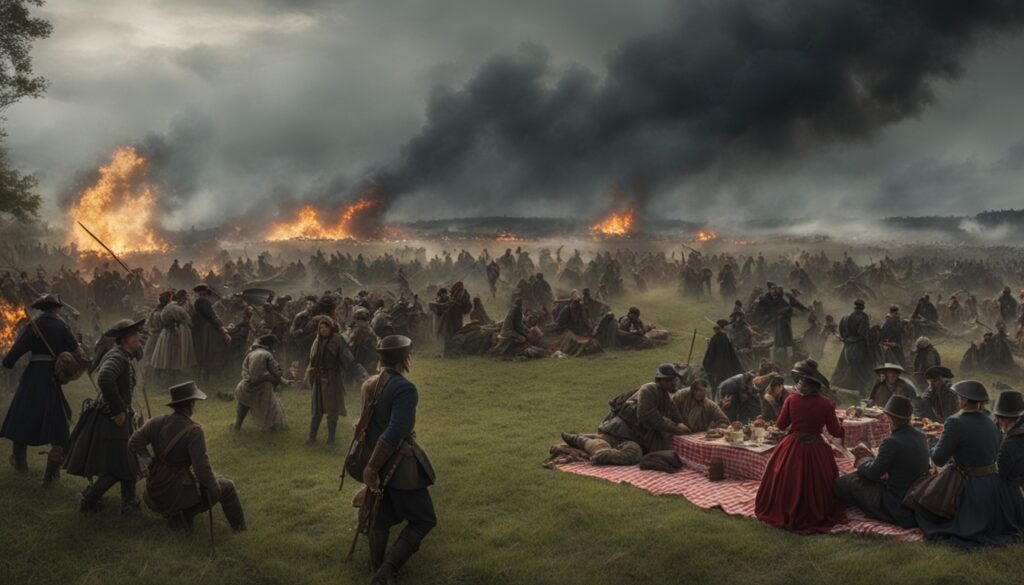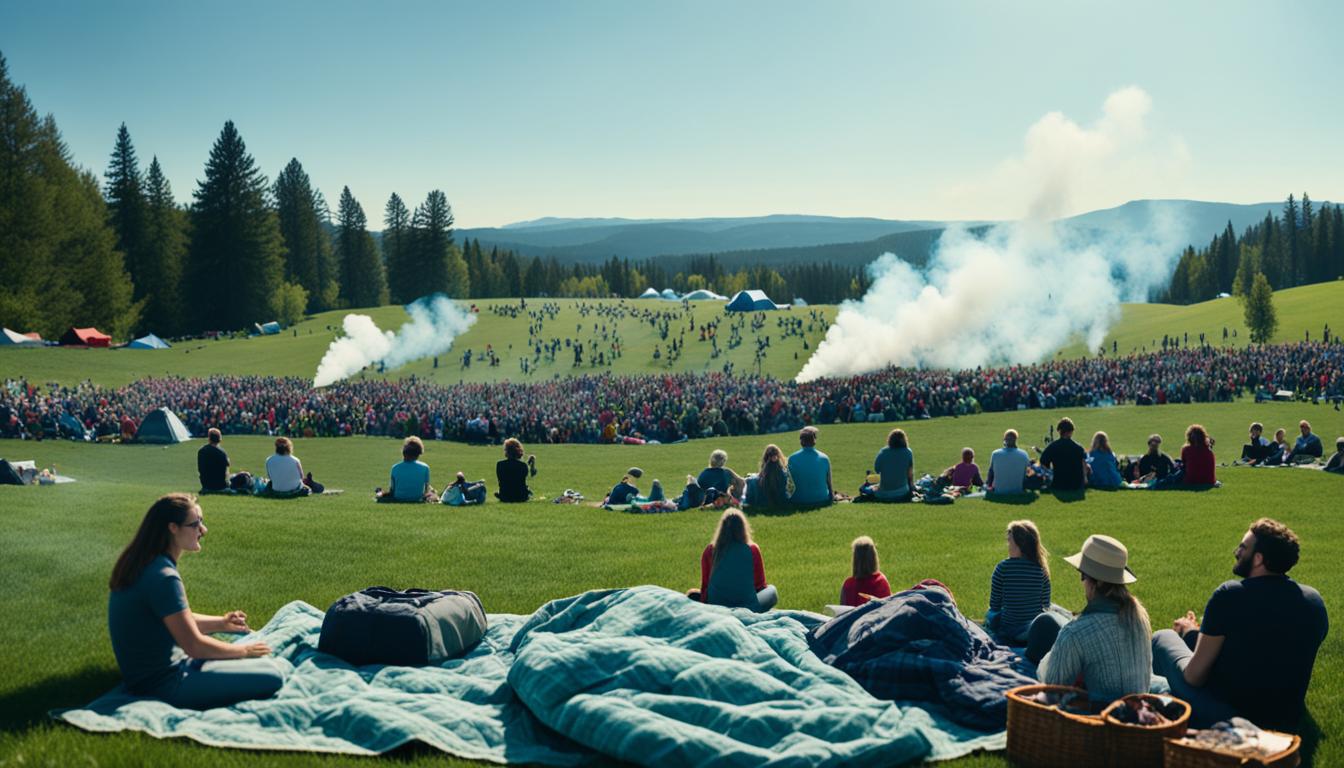On a sunny July day in 1861, a unique scene unfolded near Manassas, Virginia. People with picnic baskets and opera glasses gathered to see what they thought would be a quick Union win. They were about to witness a historic Civil War battle picnic.
The First Battle of Bull Run drew people from Washington D.C. who saw it as a fun event. They brought sandwiches and other Civil War food, expecting a show like today’s historical reenactments. But the battle turned out much more brutal and chaotic than they thought.
As the battle went on, the picnickers got caught in a rush of retreating Union soldiers. This shocking turn of events broke the illusion of a quick, easy war. It left a big impact on the spectators and the nation.
Key Takeaways
- Civilians brought picnics to watch the First Battle of Bull Run
- Spectators expected a quick Union victory
- The battle resulted in a Confederate triumph
- Over 4,700 casualties occurred during the conflict
- The event changed public perception of the Civil War
- Civil War battle picnics became a unique American phenomenon
The Battle of Bull Run: America’s First Civil War Spectacle

On July 21, 1861, the Battle of Bull Run happened near Washington D.C. It was the start of the Civil War for many people. Senators and curious onlookers went to Centreville, Virginia, to see the Union army fight.
People called it the “picnic battle” because they brought food and opera glasses. They thought war would be less intense. But the Union’s early success didn’t last long.
By late afternoon, the Union leaders called for a retreat. Panic hit the soldiers and the spectators. Senators Zachariah Chandler and Ben Wade tried to stop the retreat. Henry Wilson handed out sandwiches before he escaped on a mule.
This defeat shocked everyone in Congress and President Lincoln. It showed that the war would be longer and harder than expected. Now, picnic reenactments let us see what that day was like. They show the excitement and horror of the Battle of Bull Run.
Civil War Battle Picnics: A Unique American Phenomenon
The idea of people watching Civil War battles with picnic baskets is a famous story in America. It’s true that some folks did bring their own food to the fights. They went to Centreville Heights, just five miles away from the action at Bull Run.
Since it was a long way from Washington, they brought their own meals. This led to Civil War era food picnics. It was a unique way to enjoy a meal during a time of war.
Captain John Tidball saw a mix of people at these picnics. Senators and hotel waiters met, and women sold pies. It was not like today’s picnics with games. People were more interested in seeing the battle from a distance.
William Howard Russell from the London Times noted that people used opera glasses to watch the battle. This shows that people dressed up for the event, even though it was a picnic. The mix of formal clothes and a casual picnic setting was quite unusual.
Hollywood might show big crowds right in the danger zone, but in reality, only a few, like Rhode Island Governor William Sprague, got close to the action. Most people stayed far away, turning a brutal war into a sort of picnic. This strange mix of war and social norms created a memorable moment in history.
The Impact of Civilian Presence on the Battlefield
The Battle of Bull Run changed how Americans saw the Civil War. Civilians who came to watch saw more than they expected. As Union troops retreated, they found themselves in the middle of chaos. This was far from the authentic Civil War experience they had hoped for.
Some politicians tried to help the troops, but it didn’t work. Congressman Elihu Washburne tried to rally the troops, but failed. Another congressman, Alfred Ely, got too close and was captured. He spent five months in Libby Prison, showing how dangerous it was for civilians.
The presence of spectators caused problems. Photographer Mathew Brady got stuck in traffic at Cub Run bridge. His struggle to get out showed the issues caused by civilians. Sadly, one civilian, Judith Henry, lost her life when fighting reached her home.
This event changed how people viewed the war. The initial excitement turned into a sobering realization of the war’s true nature. It showed that future Civil War reenactments would be the safest way for civilians to experience the battles. The Battle of Bull Run was a harsh lesson, proving that war was not a spectator sport.

Leave a Reply